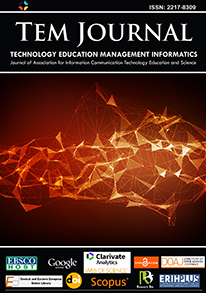Sensitivity Options of 5G Non-Standalone Deployment Strategies: A Simulation Model for Emerging Countries
Sensitivity Options of 5G Non-Standalone Deployment Strategies: A Simulation Model for Emerging Countries
Author(s): Muhammad Imam Nashiruddin, Putri Rahmawati, Muhammad Adam Nugraha, Ahmad Tri Hanuranto, Muhammad Suryanegara, Yunendah Nur FuadahSubject(s): Business Economy / Management, Energy and Environmental Studies
Published by: UIKTEN - Association for Information Communication Technology Education and Science
Keywords: 5G technology; business sensitivity; non-standalone; urban area; techno-economic
Summary/Abstract: Deploying cutting-edge 5G technology is a major challenge for mobile operators in emerging countries, facing hurdles on both the technical and economic fronts. This study provides specific ways in which mobile companies in developing countries can use 5G technology to benefit economically. This study utilizes a sensitivity option with a techno-economic analysis (TEA) simulation model to evaluate business options influencing successful 5G non-standalone (NSA) deployment in these markets, using Indonesia’s Bandung City as a case study. The analysis finds that Bandung requires 172 5G gNodeBs to meet traffic demand. Further, the 5G NSA deployment delivers strong key performance indicators (KPIs), with good signal synchronization received power (SS-RSRP) and signal-to-interference noise ratio (SS-SINR). Sensitivity analysis identifies the gNodeB amount as the most critical parameter impacting overall 5G NSA deployment feasibility. Overall, the analysis indicates mobile operators can recover investments after 3 years and 10 months, providing evidence for the viability of 5G NSA deployment in Bandung’s urban area.
Journal: TEM Journal
- Issue Year: 13/2024
- Issue No: 1
- Page Range: 36-49
- Page Count: 14
- Language: English

